Interesting Facts About the Earth
Written by Arshdeep Kaur
Fun Fact about the Earth: The Amazon Rainforest, often called the “lungs of the Earth,” produces approximately 20% of the world’s oxygen and is one of the most biodiverse regions on the planet.
Written by Arshdeep Kaur
Are you looking for interesting facts about the Earth? If you are, then your search is over – here we cover everything, from mountain peaks to ocean depths.
But before diving into the details let’s start with some basic facts about the Earth.
- Earth’s surface is 71% water and 29% land.
- Average radius- 6,371 kilometers (3,959 miles).
- Earth takes about 365.25 days to orbit the Sun.
- The highest point on Earth is Mount Everest, reaching 8,848 meters (29,029 feet) above sea level.
- The lowest point on Earth is the Mariana Trench, plunging approximately 10,994 meters (36,070 feet) below sea level.
- Earth formed approximately 4.5 billion years ago.
Now for some fun facts about the earth.
1. A day is not 24 hours long

Despite what you have been told Earth doesn’t have a 24-hour day instead it is increasing by a tiny fraction which is not felt in our everyday life. That fraction is 1.7 milliseconds that increases every century!
Why is that happening?
Imagine you are playing with a spinning top. After spinning for a while, it starts slowing. The same thing happens with the Earth – it takes a tiny bit longer to spin around the Sun making our days longer.
2. The Earth is not perfectly round
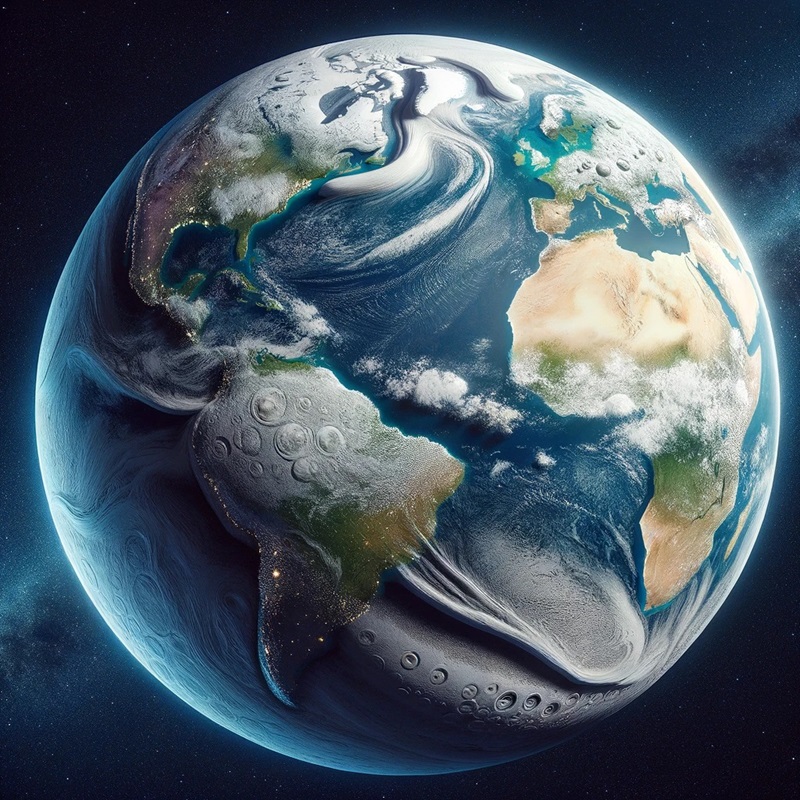
Earth is round, but not perfectly. Instead, it has an “oblate spheroid shape” which is more like a squished ball than a round sphere kind of like a pancake that is squished at the top and bottom.
Why is the Earth shaped this way?
It’s because of the way it spins that makes it bulge outward – something like a giant spinning pizza! The faster it spins, the more the dough stretches outwards, right? This is what happens to Earth! Its spin makes it wider around the middle (equator) and slightly squished at the top and bottom (poles).
3. Hotter than the Sun
When we think of hot, we think of the sun. But, here’s another interesting fact about the Earth – its inner core is so hot that it reaches a temperature of about 5,7000 degrees Celsius (10,300 degrees Fahrenheit).
What’s Earth’s inner core?
The inner core of the Earth is the innermost layer of our planet, about 5,150 kilometers deep, buried beneath the outer core are the mantle and crust.
It’s mainly a solid ball of iron, nickel, and trace amounts of other elements like sulfur and oxygen. Think of it as a giant, super-hot metal ball!
4. The ring of fire
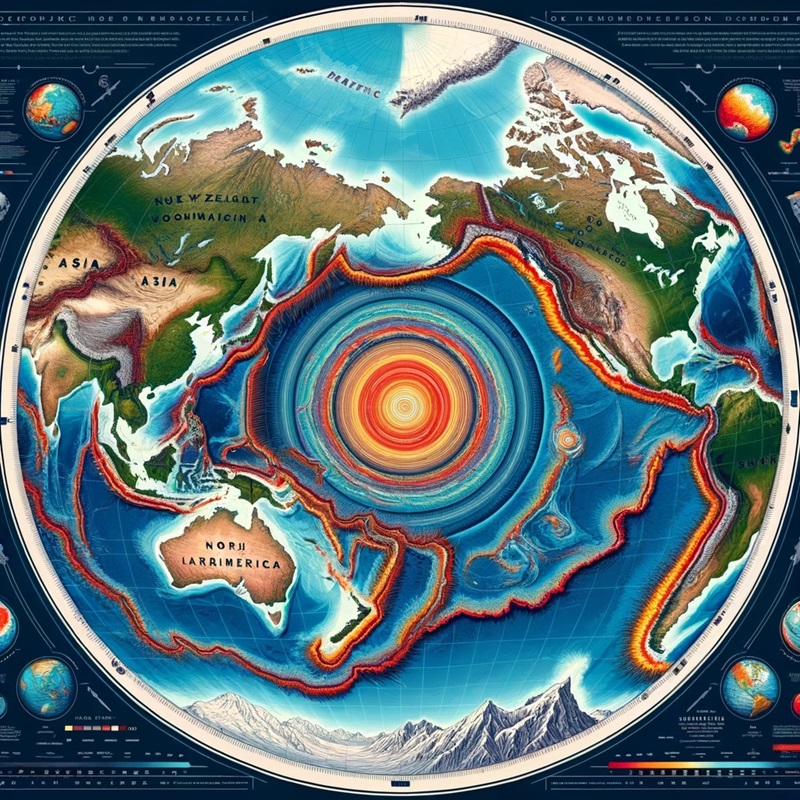
“The Ring of Fire” is a horseshoe-shaped zone around the Pacific Ocean. It gets frequent earthquakes, volcanic eruptions, and mountain formation. It stretches for about 40,000 kilometers and includes parts of:
- North and South America
- Asia
- New Zealand
- Oceania
This belt is a result of the movement of tectonic plates. The Pacific plate is constantly moving westward, colliding with other plates along its borders. This collision creates friction and pressure, leading to earthquakes, volcanoes, and other geologic activity.
The countries along The Rings of Fire have faced major earthquakes like the 2011 Tohoku earthquake and tsunami in Japan and the 1960 Valdivia earthquake in Chile, which was the strongest earthquake ever recorded.
5. A World of color underwater!
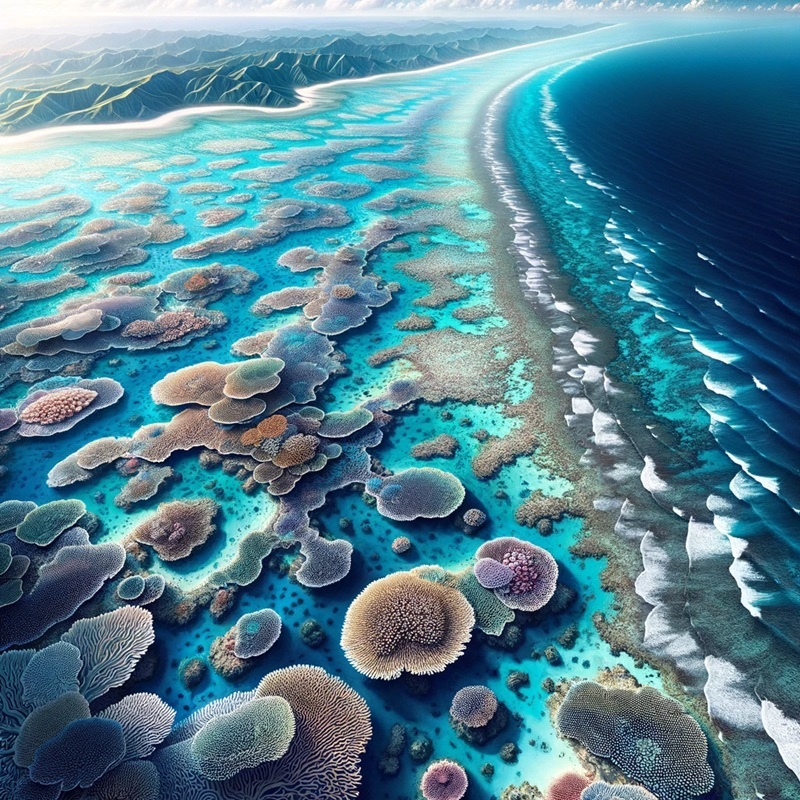
The Great Barrier Reef is the world’s biggest coral reef stretching along Australia’s coast. It’s so big that it covers an area as big as not only but many cities put together.
What are reefs? Reefs are tiny creatures called corals, who team up with algae to build hard skeletons over time. These skeletons pile up, creating underwater mountains covered in colorful life.
Why is the Great Barrier Reef important? The Great Barrier Reef stretches over 2,300 kilometers spreading over an area of 344,400 square kilometers which is as big as an underwater city full of life. It has 2,900 individual reefs and 900 islands, creating a vast and diverse marine ecosystem. It is home to a stunning array of marine life, including more than 1,500 species of fish, 400 species of coral, and countless other organisms such as sea turtles, sharks, dolphins, and dugongs.
However, The Great Barrier Reef is currently facing risks due to climate change, pollution, and overfishing for which efforts are now being made to protect our marine ecosystem from depleting. It is important to not pollute water bodies as they are home to various species and marine life.
6. The Moon is Drifting Away
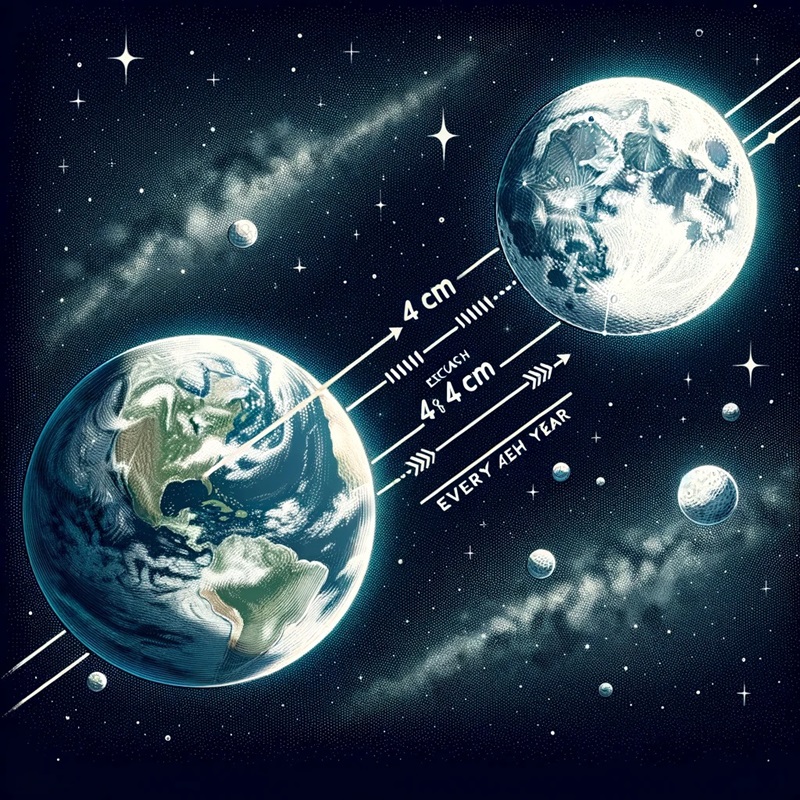
The Moon is slowly moving away from Earth by 4 cm every year. Let us understand this with an example- Imagine you and your friend are holding hands and spinning around in a circle while spinning you both feel a force pulling you towards the center but the force of holding your friend’s hand helps you maintain balance.
When the Moon and the Earth spin around each other, the Earth’s Gravity ( a force that pulls things towards each other) pulls the Moon towards itself but the Moon has its gravity which clashes with Earth’s pull towards the Moon making it move away from it.
7. Earth has an Underwater Mountain

We all know that Mount Everest is the tallest mountain on Earth but here’s the catch – an underwater mountain in the Pacific Ocean called Mauna Kea is taller than Mount Everest. It is 33,000 feet (10,058) high, while Mount Everest is 8,848m high.
What is an Underwater Mountain? To measure the height of a mountain it is measured from the ocean floor to its peak. But with Mauna Kea, only 1 third of it sticks above the ocean while the remaining is underwater which means it is both above and beneath the sea level.
8. Lights in the Sky

You must have seen pictures of the Northern Lights that appear as dancing lights in the sky. They are also called the Aurora Borealis which paint the sky with their vibrant colors of green, pink, red, and purple.
They can be seen in high-latitude regions of the Northern Hemisphere including Iceland, northern parts of Sweden, Finland, Norway, Russia, Canada, and Alaska as well as southern Greenland.
What causes the Northern Lights?
It is caused by charged particles (electrons and protons) emitted by the sun. When these charged particles enter Earth’s atmosphere, they collide with gas molecules (oxygen, nitrogen, and much more) that are present in the atmosphere leading to the release of energy in the form of light that we see in the Aurora Borealis.
Why are the particles colored?
The color released by these charged particles depends on the altitude at which they collide with these gases, for example- at higher altitudes they emit green and red light due to oxygen whereas at lower altitudes they emit blue and purple hues due to nitrogen. The dance-like movement happens due to Earth’s magnetic field and solar wind.
9. The Oceans Have Gold in Them!

We all know oceans cover 71% of Earth’s surface and these vast oceans carry with them many deep treasures ironically they do hold vast amounts of treasures i.e. gold dissolved in them. Approximately 20 million tons of gold are dispersed in the ocean in the form of dissolved particles.
But here’s the catch, the quantity of gold is big but the concentration is really low making the extraction impossible and economically impractical. The average concentration of gold is 0.1 to 0.2 parts per billion which means for every billion parts of seawater there are only 0.1 t-0.2 parts of gold.
10. Depths of the Krubera Cave

Let’s Dive into the depths of The Krubera Cave, located in Arabika Massif of the Western Caucasus in Georgia going to the depths of over 2,197 meters (7,208 feet). The depth is measured by the distance from its entrance to its lowest point where the cave floor ends at the deepest level.
What is the shape of the cave? The cave is not shaped in a long line instead it is a labyrinth of passages, tunnels, and chambers throughout the ancient limestone created by the force of water over millions of years. It is like going through a maze in the park but instead of getting out of the maze in the end imagine yourself at the end of a cave.
11. Driest place on Earth
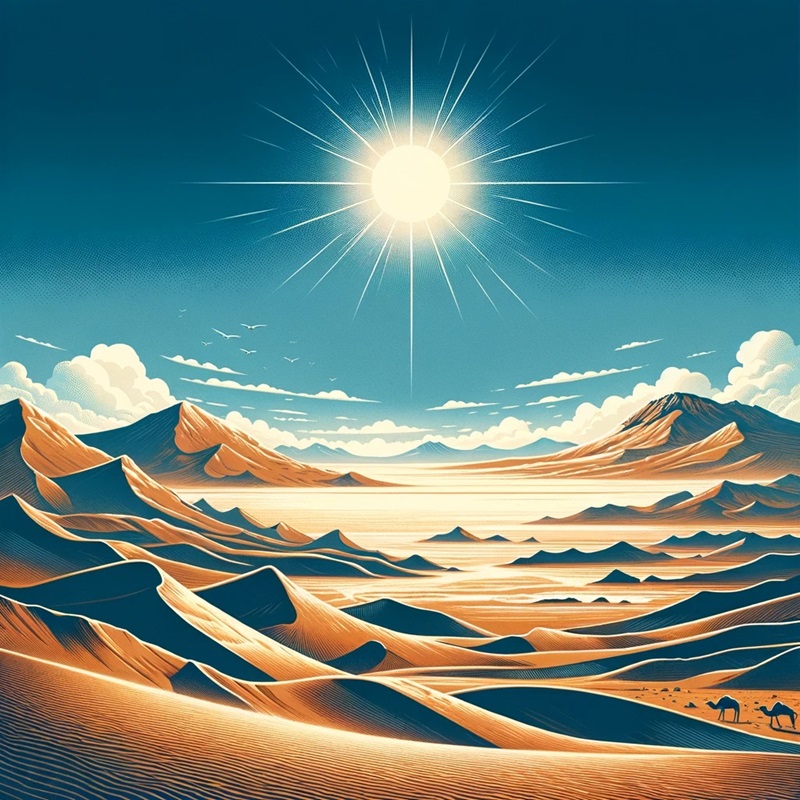
The driest place on Earth is the Atacama Desert in Chile (apart from the poles) covering an area of approximately 105,000 square kilometers (40,600 square miles) with annual rainfall of less than 1 millimeter (0.04 inches). But what is strange is that it is right next to the biggest body of water on Earth – the Pacific Ocean.
Why is it still dry?
It is located between the Andes Mountains and the Pacific Ocean creating a rain shadow effect, whereby the mountains block any air with moisture from the Pacific Ocean to reach the desert making it the driest place on Earth.
12. The Snow Desert
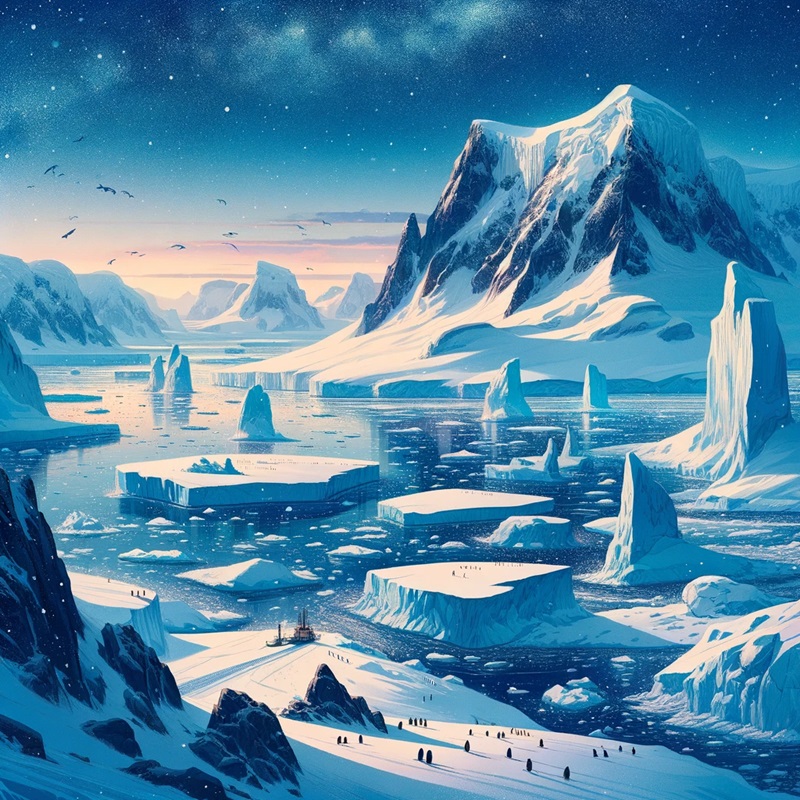
Welcome to Antarctica, the coldest place on earth located in the Antarctic Region closer to the South Pole. The temperatures go up to minus 34.4 Celsius (minus 30 degrees Fahrenheit) in winter and the lowest temperature ever recorded is minus 89.4 Celsius (minus 129 Fahrenheit).
How can Antarctica be a desert? A desert is classified as a region receiving very little rainfall making it difficult for plants and animals to gain territory on the land, all of which is true for Antartica making it a polar desert.
Do you know 90% of the world’s freshwater is locked up in Antarctica’s permanent ice sheets?
13. Earth is recycled
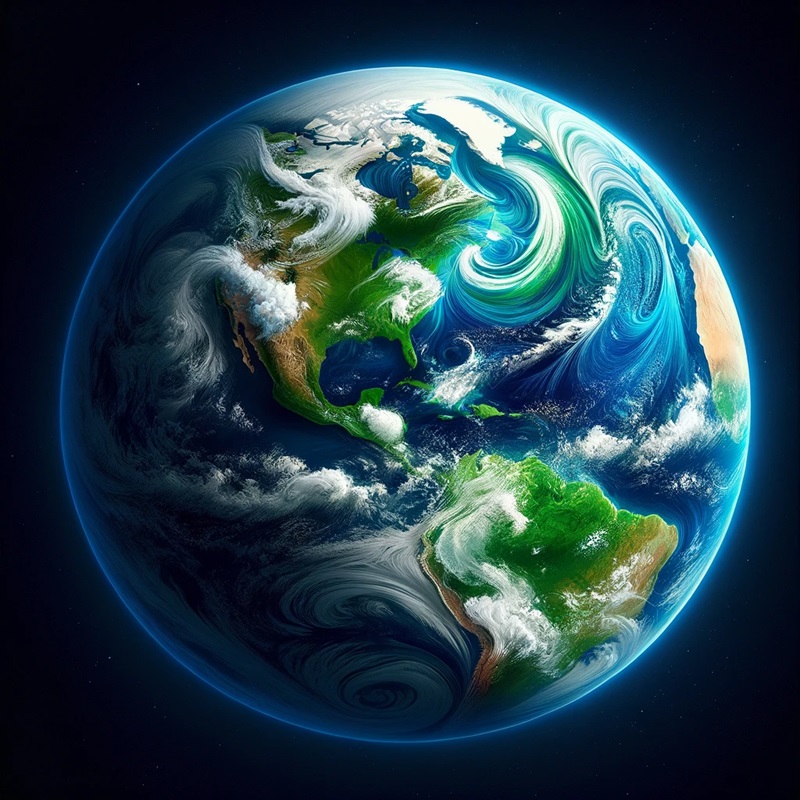
Guess what recycling is not limited to plastic, the Earth recycles its surface over time. The rocks covering its surface sink deeper experiencing immense heat and pressure making minerals inside them melt and erupt on the surface in the form of volcanoes.
Imagine the rocks to be chocolate chip cookies. The cookies are made of things like salt, flour, and butter, similarly, the rocks are made of various minerals like oxygens and carbon. The cookie batter changes when heated similarly when the rocks are under immense heat and pressure, they change and come out in the form of molten lava that erupts from volcanoes.
14. Australia is drifting away!

We know the tectonic plates that cover Earth’s surface move and surprisingly the one on which Australia sits doesn’t stand still! It moves up to 2.7 inches per year as the plate is moving northward with a slight clockwise rotation.
Corrections have been made in its longitude and latitude over 4 times in the past 50 years with the last one being in 1994, about 656 feet.
15. Hudson Bay is gravity-less
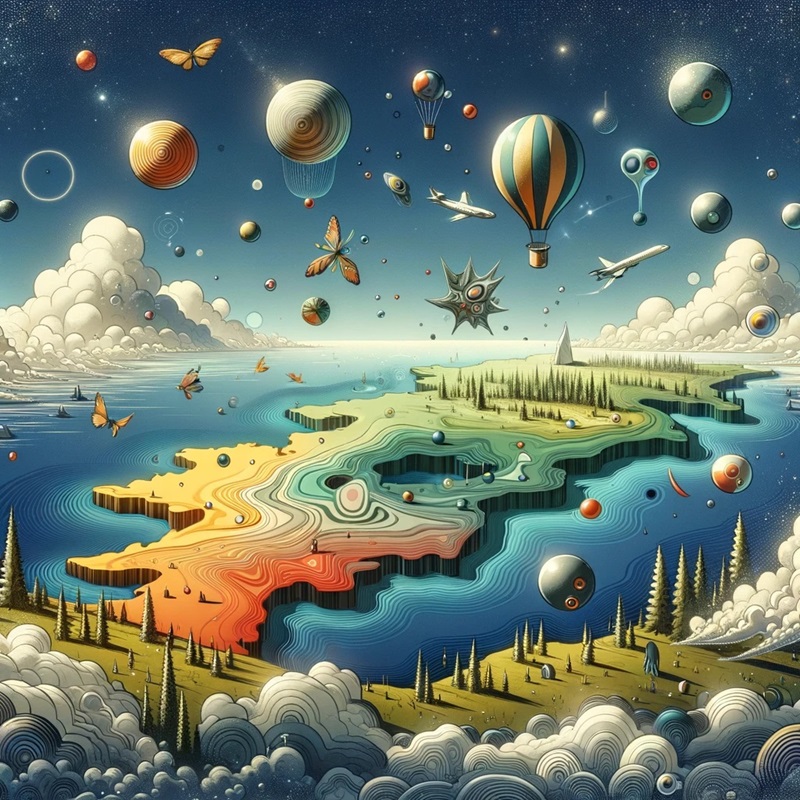
Hudson Bay in Canada has less gravity than the rest of the Earth. Now, it doesn’t make you float like you do in space but you weigh less here than you would anywhere else in the world.
But why doesn’t gravity work here? Gravity is the result of mass, meaning every region on Earth has a varying gravity according to its mass. Now Earth was once covered with ice and Canada was covered by an ice sheet (Laurentide Ice Sheet) so heavy that it decreased the mass of these rocks making the region experience less gravity.
16. The Loneliest Place on Earth is Point Nemo
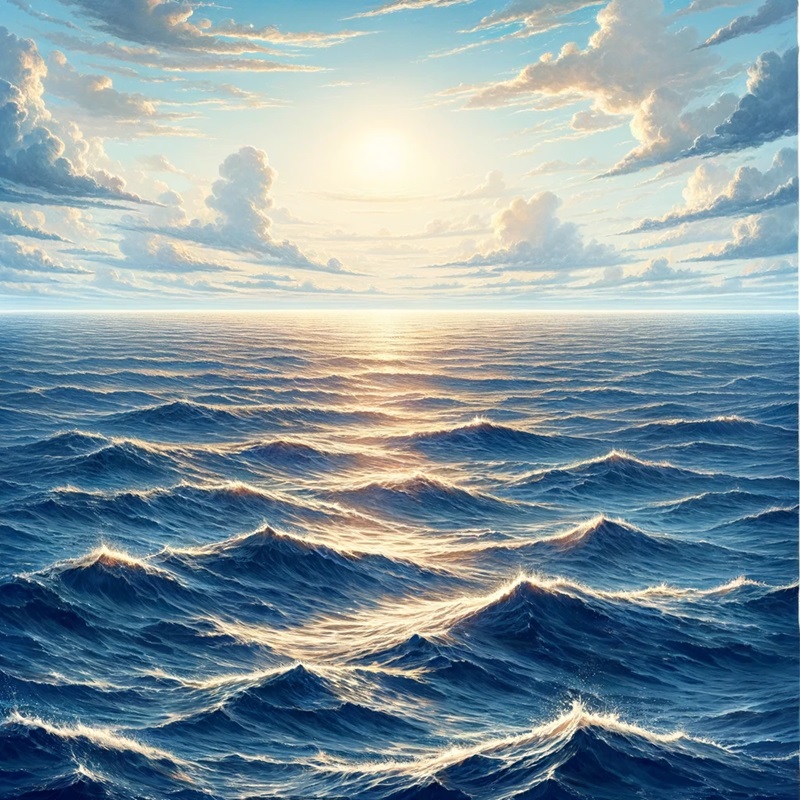
‘Point Nemo’ is the farthest from land. It’s located in South Pacific and is as far from land that you can get. Nemo, which means ‘no one’ in Latin, is 3,000 miles from New Zealand and a another 2,000 miles north of Antarctica! Imagine being here!
These were some really interesting fun facts about the earth. Share them with your friends!
Written by Arshdeep Kaur

Better Your Child’s G.K. In 3 Minutes – Get This Free Newsletter
Get fun facts, simple and easy news, quizzes, and lots of other interesting things to read in your mailbox – for free! It’s what we call GK-on-the-go!
I Kid You Not now has a large readership across India and also parts of the world. If you want to write for us, you can submit your story here. You can also apply to become a news anchor. Apply here



Comments